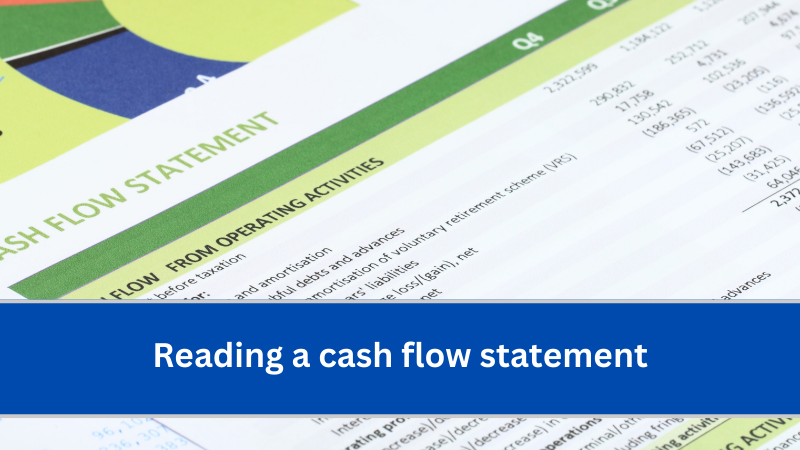Small business owners have a lot of tasks to manage to keep their businesses running smoothly, but among the most important things on the radar is the financial health of the enterprise.
Everyone knows when the money dries up, you’re done. Though there are many pieces to the financial puzzle, for smaller businesses in particular, cash flow is often the most critical. We’ve looked at the cash balance report previously and recommend that owners review this report daily. But there’s another, more comprehensive report you as an owner should be spending time: the cash flow statement.
The cash flow statement, one of the three fundamental financial statements, outlines your
company’s the inflow and outflow of cash over a specific period, usually monthly, quarterly, or
annually. Think of it as a compass, revealing how much money comes in and goes out, allowing you to ascertain your business’s cash generation and management.
Cash flow statements have three main sections:
1. Operating Activities: This section records cash flows generated and used by your primary business operations. It includes cash received from customers, cash paid to suppliers, employees, and other operating expenses. Understanding your operating cash flow is paramount, because it reflects the day-to-day fiscal health of your business. Positive operating cash flow indicates that your core business activities are generating enough cash to sustain your operations.
2. Investing Activities: This section records cash flows associated with your business’s investments in long-term assets. It includes cash spent on purchasing property, equipment, or other capital assets, as well as cash received from selling these assets.
3. Financing Activities: This section records cash flows from financing activities, including cash received from issuing stock or taking on debt, as well as cash used for dividends, debt repayments, or buying back stock.
We recommend you examine your cash flow statement frequently, though exactly how often
will depend on a variety of factors, including the intervals at which it is prepared. Doing so will
help you spot potential cash shortages and enable you to pinpoint seasons or cycles when cash inflows fall.
Being a student of your cash flow statement offers other advantages too, such as being able to understand the relationship between your net income and net cash or when your accounts receivable collections need some work.
If you need to seek outside financing, lenders and investors will have a keen interest in your
cash management. A healthy cash flow statement will build credibility and go a long way
towards making your case.
To discuss how to implement and utilize a cash flow statement for your company, contact us at
info@sbsaccountants.com or 770-284-5537 today for a consultation.

